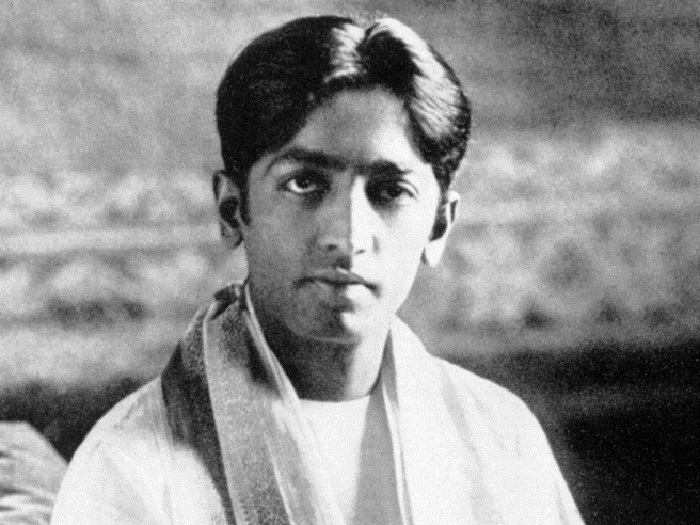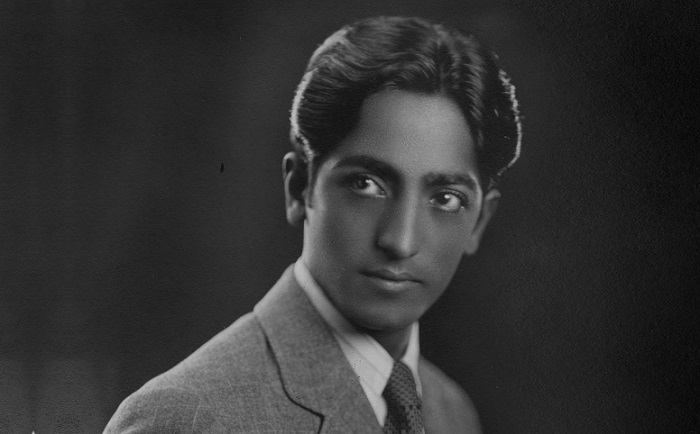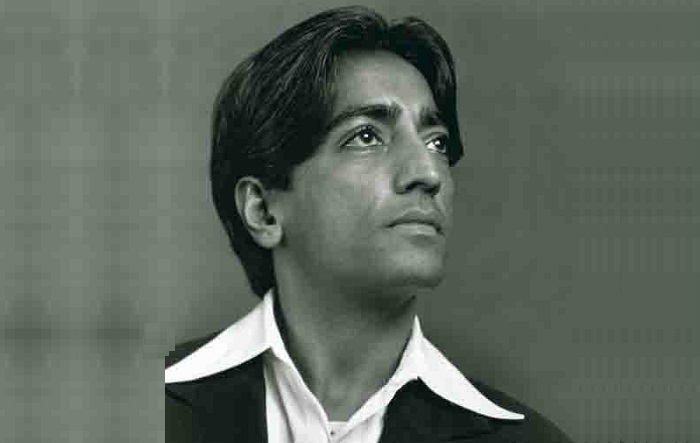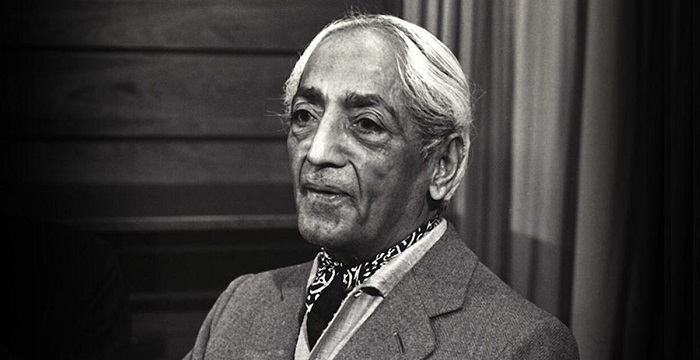Fast Facts
Birth: 12 May 1895
Place of Birth: Madanapalle, Madras Presidency, British India
Death: 17 February 1986
Place of Death: Ojai, California, United States
Famous As: Philosopher, Speaker and Writer
Father: Jiddu Narayaniah
Mother: Sanjeevamma
Jiddu Krishnamurti was an Indian philosopher, writer, and speaker. Krishnamurti became a worldwide sensation at a young age, when he was announced as the future ‘World Teacher’ by the Theosophical Society. However, Krishnamurti’s popularity reached newer heights within a sect of people when he detached himself from the organization and refused to be the ‘messiah’ that ‘Theosophical Society’ wanted him to be. Drawing inspiration from psychic experiences, Krishnamurti later became a well-known philosopher, whose public lectures pertaining to spiritual topics attracted listeners worldwide. Krishnamurti’s views became popular in the United States, Europe, India, Australia, and Latin America. Krishnamurti also founded many schools all over the world. In 1928, he established ‘The Krishnamurti Foundation,’ which operates a number of schools across the world.

Image Credit : https://tomdas.com/2016/03/23/jiddu-krishnamurti-true-meditation/
Childhood & Early Life
Jiddu Krishnamurti was born at Madanapalle, Madras Presidency, in British India. There is no unanimity regarding Krishnamurti’s actual date of birth, but Mary Lutyens, known for her biographical works on Krishnamurti, claims it to be May 12, 1895. He was born into a Hindu Brahmin family to Sanjeevamma and Jiddu Narayaniah.
His family moved to Cudappah in 1903, where he was enrolled at a local school. Vague and dreamy, Krishnamurti was thought to be intellectually disabled and was beaten regularly by his father and teachers. As a kid, Krishnamurti was bombarded with psychic experiences, such as seeing his deceased mother and sister. However, he did not disclose it to anyone, until he wrote a memoir about it when he was 18.
In 1908, his father, who was a theosophist, started working as a clerk at the ‘Theosophical Society’ in Adyar. In April 1909, an important member of the society named Charles Webster Leadbeater came across Krishnamurti near the society’s headquarters at Adyar. Leadbeater, who was a self-proclaimed clairvoyant, noticed Krishnamurti’s aura to be the ‘most wonderful.’ Hence, he took Krishnamurti under his wings and introduced him to the society.
The Preparation
Krishnamurti was nurtured by the ‘Theosophical Society,’ which prepared him to be the new ‘World Teacher.’ Krishnamurti and his brother Nityananda were tutored privately and were even sent abroad to continue their education. Though Krishnamurti struggled academically, he was able to learn English within six months. He became close to the members of the society, especially Annie Besant, who played a major role in developing his overall personality. Besant eventually acquired the legal guardianship of Krishnamurti, who considered her to be his surrogate mother.
In 1911, another international organization, ‘Order of the Star in the East’ (OSE), was established in order to prepare everyone for the arrival of the ‘World Teacher.’ Krishnamurti was made the head of the OSE and the society continued its mission in preparing him for the job, which they thought Krishnamurti was destined to do. In April, Krishnamurti and his brother Nityananda were taken to England, where Krishnamurti delivered his maiden speech. From 1911 to 1914, Krishnamurti and Nityananda travelled to several European countries.
Meanwhile, Krishnamurti had become closer to his brother Nityananda, who was made the Organizing Secretary of the OSE. Staying away from home for such a long period of time, Nityananda had become his only moral support and someone whom he could completely rely on. Meanwhile, Krishnamurti had become a proficient writer and his works were largely based on the works of ‘Order of the Star in the East.’

Image Credit : https://www.youtube.com/watch?v=D0-ozr9XmW0
Life-changing Experience
Krishnamurti was no stranger to psychic experiences. But what he experienced at a cottage in California change his life forever. In 1922, Krishnamurti and Nityananda, who was diagnosed with tuberculosis, were taken to California, and they stayed in the Ojai Valley. On August 17, 1922, Krishnamurti experienced a sharp pain in his neck. For the next two days, Krishnamurti experienced loss of appetite and increase in sensitivity and pain.
*According to witnesses, Krishnamurti had lost his consciousness. However, when he finally recovered after a couple of days, Krishnamurti claimed that he was aware of his surroundings, though it appeared as if he had lost his consciousness for two days. He also claimed that he had an experience of ‘mystical union.’ These unexplained experiences manifested at regular intervals and would refuse to die down until the very end.

Image Credit : https://pantheism.com/about/luminaries/jiddu-krishnamurti/
With time, Krishnamurti and his associates came to terms with the experience. They started calling the experience as ‘the process,’ which eventually became a part of Krishnamurti’s life. These unusual experiences were described as ‘the vastness,’ ‘the sacredness,’ and ‘the otherness,’ among many other terms. The word ‘otherness,’ which signified Krishnamurti’s psychic experiences, was now appearing regularly in almost all his works.
By 1925, word about Krishnamurti’s mystical experiences had spread like wildfire. These experiences were linked with Krishnamurti’s messianic status, which intensified the anticipation regarding the new ‘World Teacher’ among general public. Meanwhile, Nityananda passed away on November 13, 1925, due to complications related to tuberculosis. Nityananda’s demise made Krishnamurti question the belief and faith he had on the ‘Theosophical Society.’ Also, his growing popularity made him uncomfortable, which prompted him to question his association with the society.

Image Credit : http://www.j-krishnamurti.org/
Krishnamurti the Philosopher
After his brother’s demise, Krishnamurti started expressing doubts on his impending role as the new ‘World Teacher.’ These thoughts culminated on August 3, 1929, when he dissolved the ‘Order of the Star in the East.’ He urged people not to follow anyone and asked them to follow their own path instead. He also said that his goal was to free mankind and that he never wished to create new religion, sect, or philosophies.
Krishnamurti’s dissociation with the ‘Theosophical Society’ gave rise to chaos within the society, which ultimately led to its schisms. From 1930, Krishnamurti travelled to various places and spoke about spirituality and philosophy, drawing inspiration from his mystical experiences. He returned to India after the Second World War, and was visited by a number of famous Indian personalities, including the then PM Jawaharlal Nehru.
Over the next few years, Krishnamurti continued delivering lectures on topics, such as religion, psychology, physics, education, consciousness studies, etc. In 1984 and 1985, he was invited to speak at the United Nations in New York. He delivered his final speech in Madras on January 4, 1986, when he invited a group of people to examine the effect of technology, nature of inquiry, nature of life, and nature of creation.

Image Credit : https://balancedachievement.com/grow-more/jiddu-krishnamurti-quotes/
Death & Legacy
Krishnamurti passed away on February 17, 1986, when he lost his battle to pancreatic cancer. A few days before his death, Krishnamurti had declared that his mystical experiences will die along with him and that no one can be his successor. He was worried about his legacy being misused by others and hence made it clear that he never intended to create a new religion or philosophy.
Krishnamurti had established ‘The Krishnamurti Foundation’, along with Annie Besant, in 1928. The foundation runs many schools all over the world. These schools follow a system of education, as seen through the lens of Jiddu Krishnamurti. Krishnamurti has also been immortalized through various books, videos, and other sources. Personalities who were influenced by his works include, Dada Dharmadhikari, Toni Packer, and Bruce Lee.


